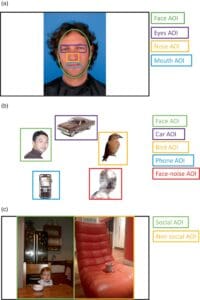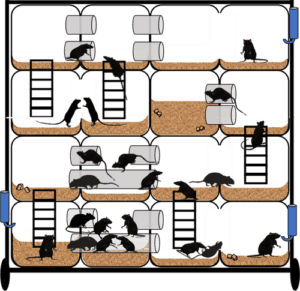The SYNGAP1 gene is located at 6p21.32 on Chromosome 6, making 6.21 (June 21st) a meaningful date for global recognition. We highlight major scientific advances, collaborative initiatives, and outreach activities within Patrick Wild Centre and SIDB that continue to strengthen and support the SYNGAP1 community.
Advancing the clinical profile of SYNGAP1-ID individuals
Two 2024 studies led by Damien Wright and colleagues at Patrick Wild Centre have made significant strides in characterising SYNGAP1-ID.

In the first study, researchers provided a comprehensive clinical profile of individuals with SYNGAP1-ID aged 3-18 years. Drawing on detailed assessments of behaviour, emotion, and social functioning, the team identified key differences between SYNGAP1-ID and typically developing controls. Those with SYNGAP1-ID showed fewer daily living skills but higher levels of emotional distress and behavioural problems. These differences tended to be greater in older children and more apparent when co-occurring with epilepsy.
In a second study, Wright and co-authors used eye-tracking to investigate social attention in SYNGAP1-ID. They discovered that affected individuals consistently spent less time looking at faces — especially the eyes (see image for example) —highlighting a measurable, objective difference in how social cues are processed. This marker of altered social attention may serve as a useful clinical phenotype. Together, these contributions from the Patrick Wild Centre underscore the importance of clinically grounded research in advancing care and support for the SYNGAP1 community.
The Rat Behavioural Phenotyping Pipeline & the Habitat

As a main part of SIDB research on NDDs, impressive work continues in the Rat Behavioural Phenotyping Pipeline and the Habitat project. With a focus on reproducibility and translational value, this platform is helping researchers compare different genetic models and identify meaningful outcomes.
The Habitat project runs in parallel with the behavioural phenotyping pipeline – it is an eco-ethological housing system (see picture) that encourages a wide range of naturalistic behaviours with minimum human interference. Preliminary data showed that Syngap rats housed in the Habitat demonstrate modified behaviour compared to those housed in standard cages. This finding highlights the important role of the environment in shaping behaviour in NDDs.
SYNGAP1 UK Family Day 2024

In October 2024, families and researchers gather at the SYNGAP1 UK Family Day in Manchester. This was an event that brought shared experiences, knowledge exchange, and community support. In particular, Lindsey Mizen and Alfredo Gonzalez-Sulser presented data on the effects of Syngap1 mutations on sleep. PhD student Sydni Weissgold showcased her work on the behaviour and physiology in SYNGAP1-ID individuals. Damien Wright presented the results from his NeuroGD study which looked at the clinical and cognitive profile of individuals with SYNGAP1-ID through behavioural assessments, eye tracking and EEG, some of which is covered in the aforementioned 2024 papers.
Check out other publications on SYNGAP1-ID rodent models from PWC and SIDB
A recent paper led by Dr Aditi Singh from the Osterweil Lab used mouse models to investigate the mechanisms of synaptic dysregulation in SYNGAP1-ID and Fragile X syndrome.
In a 2024 study, postdoctoral researcher Dr Danai Katsanevaki and colleagues showed the importance of two specific domains of the SYNGAP1 gene using a novel rat model of SYNGAP1-ID.
